9: Making the Ordinary Come Alive
Make the Ordinary Come Alive
By William Martin
Do not ask your children
to strive for extraordinary lives.
Such striving may seem admirable,
but it is a way of foolishness.
Help them instead to find the wonder
and the marvel of an ordinary life.
Show them the joy of tasting
tomatoes, apples, and pears.
Show them how to cry
when pets and people die.
Show them the infinite pleasure
in the touch of a hand.
And make the ordinary come alive for them.
The extraordinary will take care of itself.
From reimagining boxes to finding treasures buried in the soil, this is a week of making ordinary things come alive for our Kindergarteners.
To continue our inquiry on the different food groups, the children explored the type of food that gives us energy: carbohydrates.
We started off by reading a book about grains and where they come from. The children were so fascinated with the process of growing rice, especially since it’s a staple in Japan and most Asian countries. One of them even shared that in other countries, it’s difficult to grow rice. He said that we share our crops with these countries, which we send through boats and airplanes. Sharing is caring, indeed!
We continued our inquiry on carbohydrates by using flour — the main component of bread — for an experiment. We wanted to know if we can make our own playdough using different ingredients: flour, salt, water, oil, and food coloring. The children followed the procedure step by step, and took turns in adding and mixing ingredients. We definitely got our hands dirty but we had so much fun!
The children also learned that pasta is a carbohydrate, which we used for making necklaces and bracelets! The children enjoyed wearing their creations — some even wanted to cook them at home! That must have been a delicious dinner! 😀
To connect our yearlong unit on the different seasons with our inquiry on food, the children had the chance to harvest some sweet potatoes that were planted by my Kindergarteners last school year. The children were so excited to get their hands dirty and dig through the soil. What they discovered under the ground was a beautiful surprise for all of them: food treasures from the earth that grew through the care of the people who tended to them. We collected sweet potatoes of different shapes and sizes! One took the children a long time to unearth as it was so big — even bigger than their head! That would have won a prize in a sweet potato harvest contest, for sure!
The children harvested a total of 71 sweet potatoes together. We brought them to school to let them sit for a week. We learned that we should wait for a few days before cooking them because the wait makes the sweet potatoes even sweeter. The children are looking forward to when we can finally cook and eat them!
We also received a bunch of flowers after our harvest. We've hung them in the classroom and left them to dry. We're hoping to witness how the flowers and leaves dry out, just like they do in autumn.
We also deepened our inquiry on healthy choices by connecting it with our lesson on carbohydrates. The children agreed that healthy choices are not limited to the food we eat but also includes our habits. We talked about why proper handwashing is important and why it’s considered a healthy choice, especially now during a pandemic. I opened a pack of bread — a popular carbohydrate — for a ‘healthy choice’ experiment. I asked the children to touch four slices of bread with dirty hands, hands cleaned with alcohol, with soap and water, and with their shoes. The last slice of bread was left untouched. In 3-4 weeks, we will be able to see the difference between the slices of bread, and find out which amongst the bread slices shows the healthiest habit. We can’t wait to see the results!
In the classroom, we also added a carbohydrate sensory table that the children can sort, write their names on, or make art with!
For story workshop this week, I read the book called Not a Box by Antoinette Portis. The children used their imagination and created characters and objects from ordinary boxes. They reimagined the boxes to be robots, rockets, cars, and even their mommy! They shared their design through a simple drawing, which they brought to life using scrap paper and coloring materials. They are now proudly displayed in our room for all of their classmates to appreciate.
Eda - Flying Car
Jinnosuke - Rocket Robot
Atsuharu - Rocket
Ren - Rocket
Yanchen - Rainbow Rocket
Haruto - Master Robot
I also want to encourage the students to work as a team, so we used their boxes to create different characters and animals that we put together! It was a joy to see them working and solving problems as a team!
One of the things that I introduced this week was a problem solving wheel. I connected it with the choice-o-meter that we have been referring to everytime we make choices in class. The children understand that red choices sometimes happen, but we have to know what to do if problems or conflicts arise because of them. I've heard some of them say, "Okay, I will count to 10 right now" or "I think you should walk away first" when they had little misunderstandings during play. It was amazing to see how they are slowly learning how to solve their own conflicts, and take accountability for their choices.
This week, we also celebrated Oktoberfest, which is actually also a harvest festival! The children enjoyed the festivities in school by joining the games, wearing costumes, and feasting on their Bavarian themed-lunches.
It was a week of appreciating ordinary things -- of turning simple boxes into art and harvesting simple treasures from the earth. These little marvels are the simple joys that make the everyday, extraordinary.
Have a wonderful weekend, everyone!
Your Kindergarten teacher,
Pam










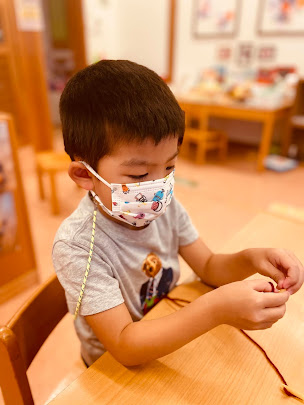







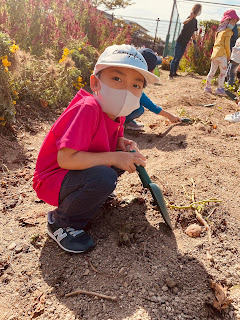



































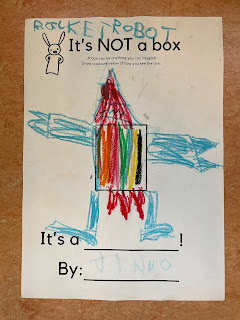
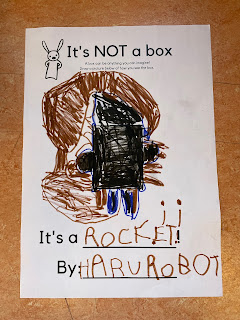







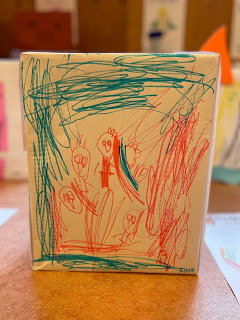










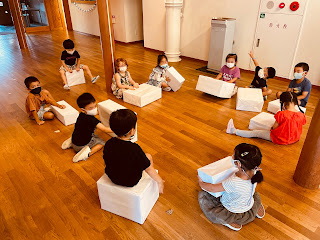








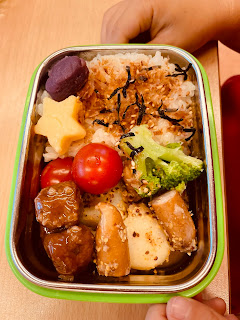












Comments
Post a Comment